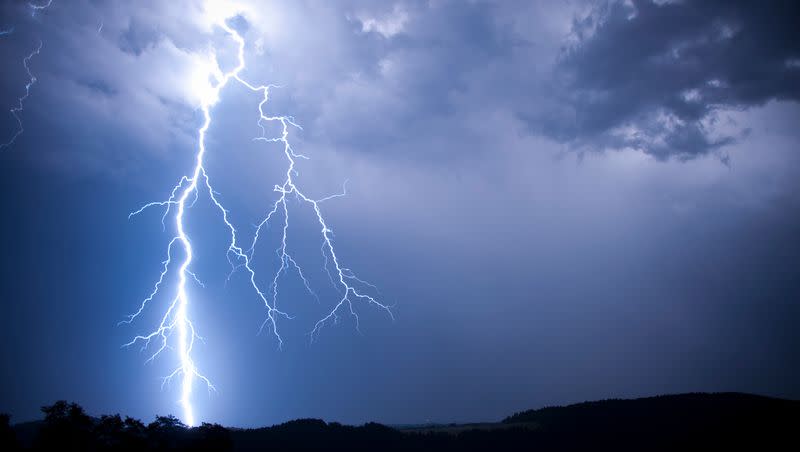Za-pow! Utah Telescope Array captures remarkable, and rare, air-to-ground gamma ray burst

A late summer storm that blasted through the desert west of Delta, Utah, in 2021 turned out to be an extraordinary event for scientific study, producing a half-dozen air-to-ground gamma-ray bursts, a phenomena that is typically only a once or twice-yearly happening.
And thanks to the massive, University of Utah-led Telescope Array in the area, researchers were able to capture, for the first time ever, video footage of lightning-triggered downward terrestrial gamma-ray flashes.
U. scientists said a special camera running at 40,000 frames per second gave an unprecedented look at how gamma rays burst downwards to the Earth’s surface from cloud-to-ground lightning strikes. They found that not only were multiple gamma rays produced at later lightning stages than previously thought, but the rays were also associated with a pulse of optical light that had never been recorded.
“This is an important step in lightning research that could lead us to the physics producing these downward gamma rays,” lead author professor Rasha Abbasi, now an assistant professor of physics at Loyola University Chicago, said in a press release. Abbasi began the research on TGFs as a postdoctoral scholar at the University of Utah.
The Telescope Array in central Utah has been operational since 2007 and covers an area roughly the size of New York City, about 270 square miles. While the ground-based grid of 500-plus surface detectors were primarily designed to observe ultra-high energy cosmic rays, collaborators from the U., Loyola University Chicago, the Langmuir Laboratory for Atmospheric Research at New Mexico Tech and the National Institute for Space Research-Brazil, have installed a suite of lightning instrumentation.
And the new gear is opening the door to even broader possibilities for scientific discovery.
“The ability of the Telescope Array Surface Detector to detect downward terrestrial gamma-ray flashes is a great example of serendipity in science,” John Belz, professor of physics and astronomy at the U and co-author of the study said in a press release. “The TASD was designed to do astroparticle physics, by studying the particle showers produced by energetic atomic nuclei from deep space.
“Purely by happenstance, the astroparticle showers share many properties — including energy, duration, and size — with the gamma ray showers known as downward TGFs. So in a sense, we are able to operate two groundbreaking science facilities for the price of one.”
While the flashes are visually remarkable, scientists warn that gamma rays are a penetrating form of electromagnetic radiation and “no joke,” capable of knocking electrons off atoms and causing serious harm to human cells.
The Telescope Array is already the largest of its kind in the Northern Hemisphere, but the U. reports the facility is in the process of expanding to four times its original size. Researchers expect the expansion, in addition to the recently installed lightning sensors, will lead to further revelations.
“In one second, your eye sees a lightning flash — that’s it. These instruments measure the change in the electric field over the whole lightning flash that happens in the blink of an eye,” said Abbasi. “We’re interested in the science of the gamma ray initiation. What stage of the lightning produces the gamma ray? Why do gamma rays happen in correlation with some lightning flashes, but they don’t in others?”

